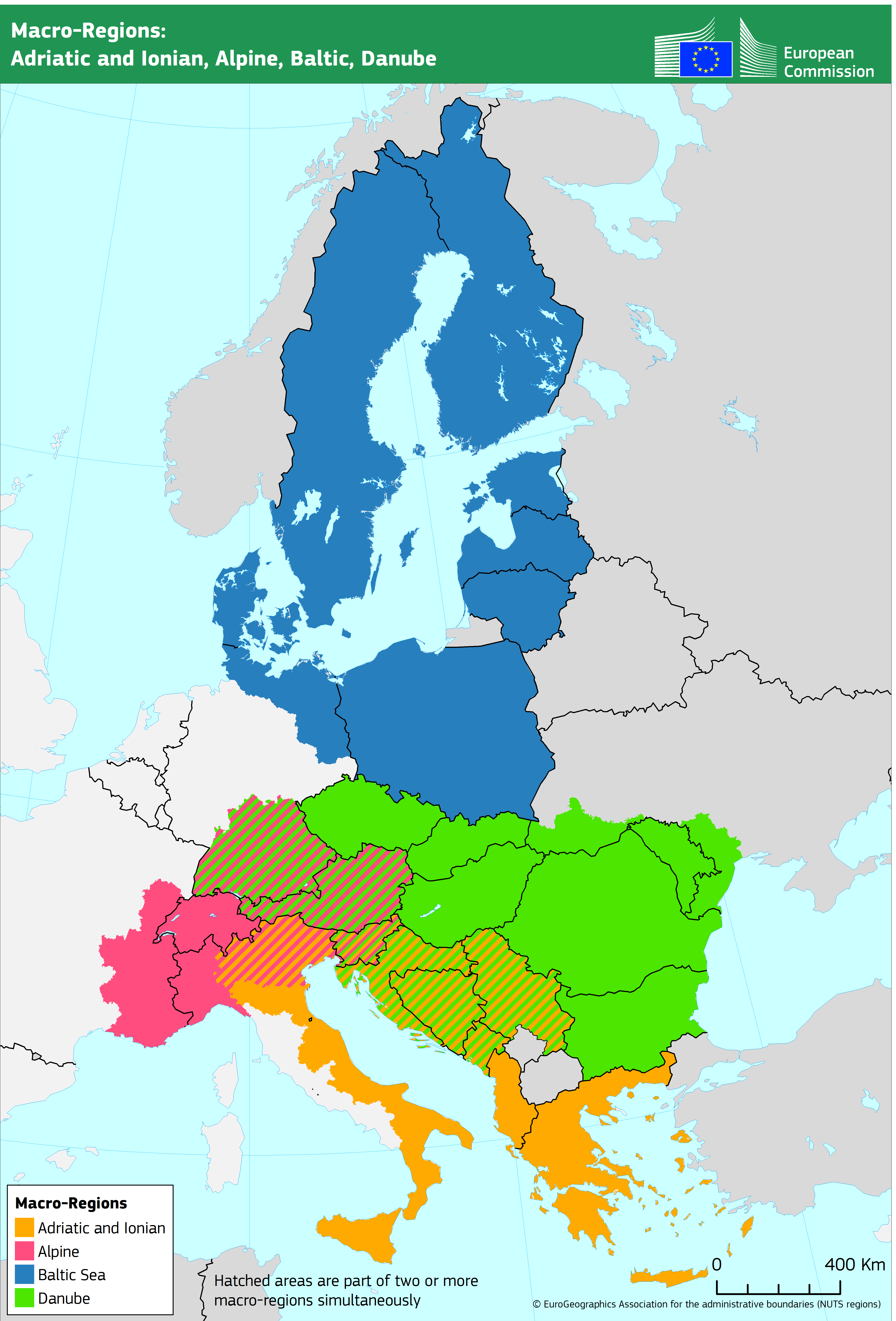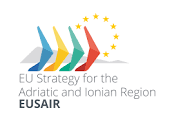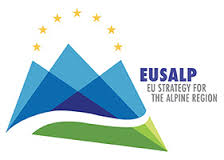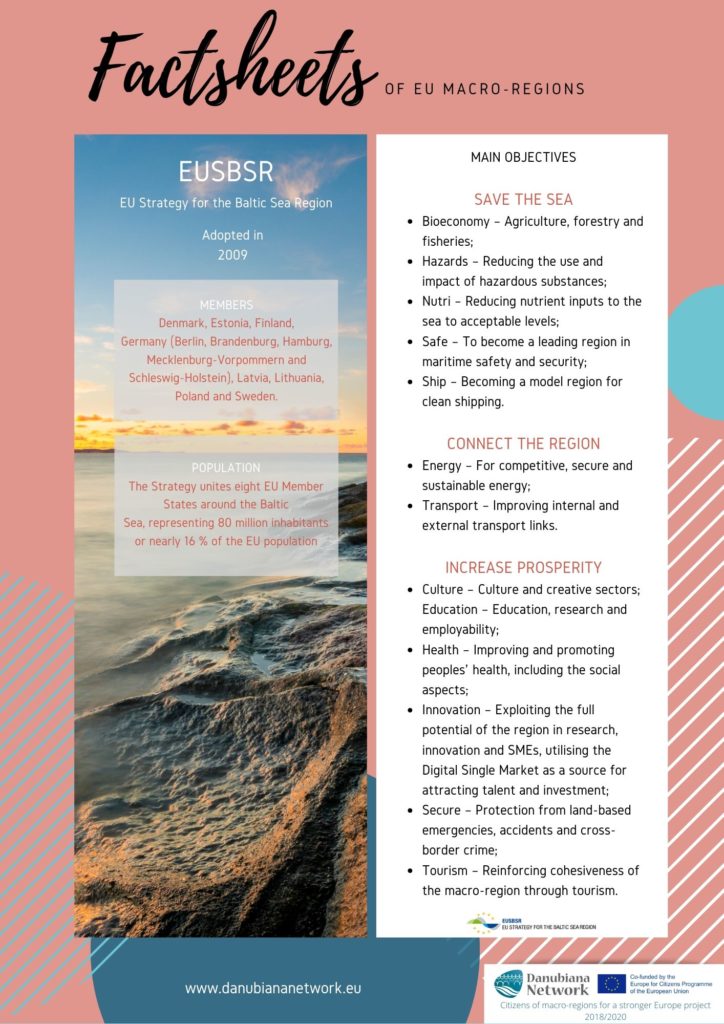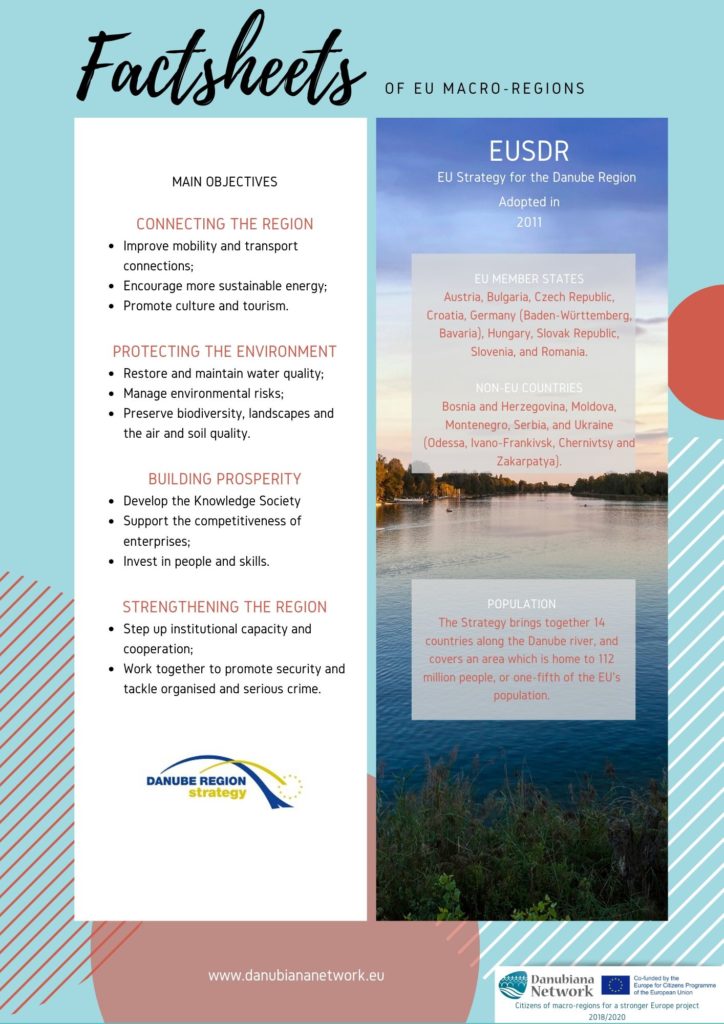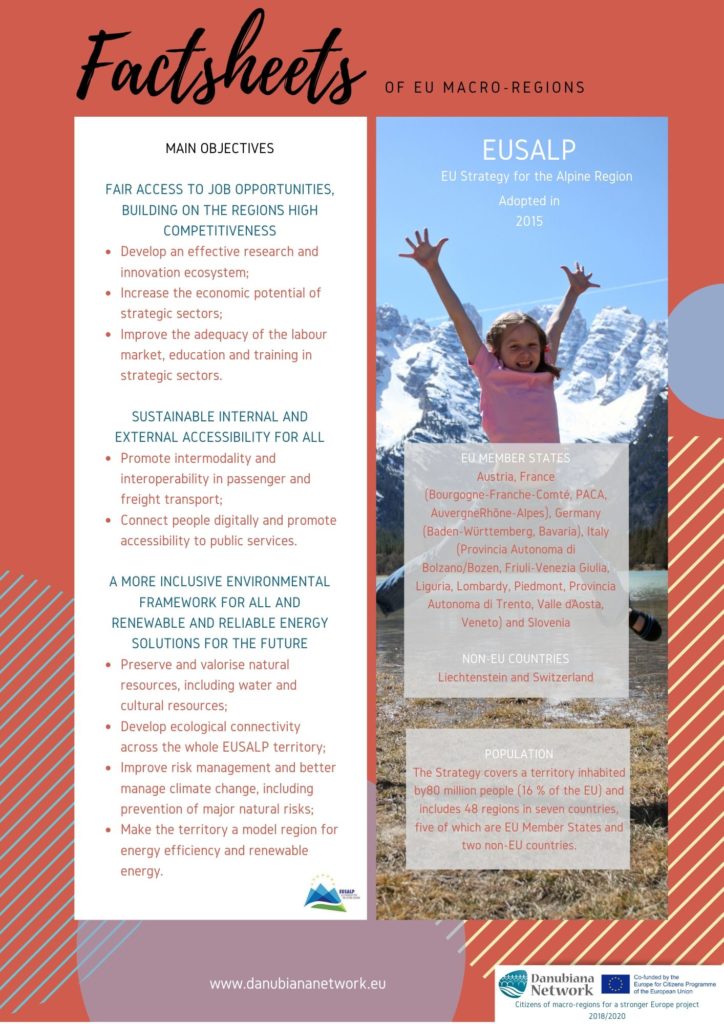“A European Union (EU) macro-regional strategy is a policy framework which allows countries located in the same region to jointly tackle and find solutions to problems or to better use the potential they have in common”.
“What is an EU macro-regional strategy?“, European Union, 2017
EU macro-regional strategies are initiated and requested by EU and non-EU Member States located in the same geographical area via the European Council. These strategies deal with common challenges and opportunities identified in each macro-region. As intergovernmental initiatives, the implementation relies on the commitment of the participating countries.
Even if they are intergovernmental initiatives and characterised by a topdown approch, majority of stakeholders believe that it is impossible to implement macro-regional strategies without the active and committed participation of civil society.”
Four macro-regional strategies have been adopted so far by the EU: the EU Strategy for the Baltic Sea Region (2009), the Danube Region (2010), the Adriatic and Ionian Region (2014) and the Alpine Region (2015). The four EU macro-regions encompass 27 countries with more than 340 million people.
Which countries are covered by the macro-regional strategies?
So far 19 EU Member States and 8 non-EU countries are taking part of one of more macro regional strategies representing over 340 million people
19 EU MEMBER STATES: Austria, Bulgaria, Croatia, Czech Republic, Denmark, Estonia, Finland, France, Germany, Greece, Hungary, Italy, Latvia, Lithuania, Poland, Romania, Slovak Republic, Slovenia and Sweden;
8 NON-EU COUNTRIES: Albania, Bosnia and Herzegovina, Liechtenstein, Moldova, Montenegro, Serbia, Switzerland and Ukraine.
Some EU countries such as Germany and Slovenia are involved in three strategies, while Croatia, Italy and Austria are concerned with two. Three non-EU countries – Bosnia and Herzegovina, Montenegro and Serbia – are part of two EU macro-regional strategies.
Member countries/regions:
Denmark, Estonia, Finland, Germany (Berlin, Brandenburg, Hamburg, Mecklenburg-Vorpommern and Schleswig-Holstein), Latvia, Lithuania, Poland and Sweden.
Member countries/regions:
Austria, Bosnia and Herzegovina, Bulgaria, Croatia, Czech Republic, Germany (Baden-Württemberg, Bavaria), Hungary, Moldova, Montenegro, Ukraine (Odessa, Chernivtsi, Ivano-Frankivsk and Zakarpattia), Serbia, Slovak Republic, Slovenia and Romania
Member countries/regions:
Albania, Bosnia and Herzegovina, Croatia, Greece, Italy (Abruzzo, Apulia, Basilicata, Calabria, Emilia Romagna, Friuli Venezia Giulia, Lombardy, Marche, Molise, Sicily, Trentino, Umbria and Veneto), Montenegro, Serbia and Slovenia.
Member countries/regions:
Austria, France (Franche-Comté, Provence-Alpes Côte d’Azur and Rhône-Alpes), Germany (Baden-Württemberg and Bavaria), Italy (Bozen, Friuli Venezia Giulia, Liguria, Lombardy, Piedmont, Trento, Valle d’Aosta and Veneto), Liechtenstein, Slovenia and Switzerland.
Read our Factsheets for more info on the macro-regions.
